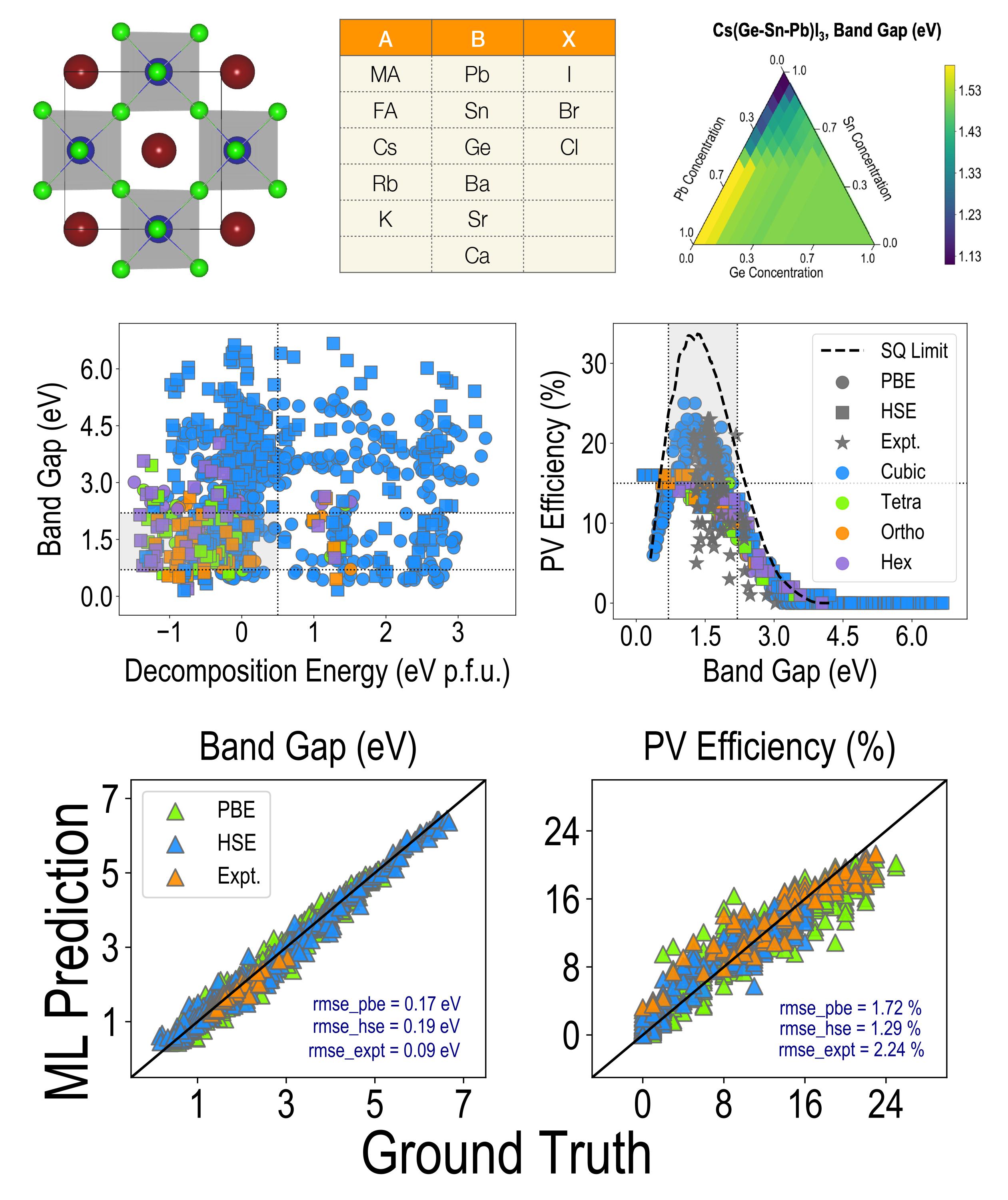Computational materials scientist relies on Negishi cluster for quantum simulations, training machine learning models
The Rosen Center for Advanced Computing (RCAC)’s Negishi supercomputer, RCAC’s newest community cluster, is playing a key role in the research of Purdue assistant professor of materials engineering Arun Mannodi Kanakkithodi and his lab.
Mannodi, who is a computational materials scientist currently working on compositional-, structural-, and defect-engineering of semiconductors for enhanced optoelectronic performance, needs to perform quantum mechanics-based density functional theory (DFT) simulations that require much more computational power than a personal computer can deliver. Negishi provides the computing power needed to run these models.
The simulations also generate large materials datasets and frameworks for the on-demand prediction of materials properties as well as inverse design of materials with targeted properties, and Mannodi and his colleagues, who are some of Negishi’s most prolific users, turn to Negishi for assistance in processing and analyzing that data.
Thanks to data and models developed using Negishi, Mannodi's group has been successful in publishing multiple peer-reviewed articles in leading materials science journals over the last three years or so.

“The fact that we have these very nice clusters and that we have dedicated nodes for my group as well as standby nodes we can use for short jobs has been very important to our success,” says Mannodi, who adds that RCAC’s computing resources were a factor in his decision to come to Purdue.
The lab also uses Negishi and other community clusters like the GPU-based Gilbreth cluster to train big neural network models to predict properties of materials. The inputs to these models are multi-dimensional and often involve hundreds of thousands of data points, so although some models can be trained on a PC, most of them require a supercomputer.
Mannodi is a big fan of RCAC’s innovative community cluster program model, through which RCAC makes significant shared computing infrastructure available to faculty while taking care of all operations and maintenance so faculty can focus on getting science done.
“When I started my PhD in 2012, my advisor had his own cluster that he had to maintain,” says Mannodi. “The community cluster program is a long way from that, and I really appreciate that all we have to do is know how to efficiently run these calculations and take care of our data, and everything on the back end is maintained by experts.”
Mannodi also has a number of undergraduate and graduate students who have worked on the Negishi cluster, and has been able to quickly and easily get all of his students up to speed on using the cluster with the help of RCAC’s staff and online resources. Mannodi also credits specialized Negishi nodes, such as for summer undergraduate research fellowship (SURF) students, for aiding his students' calculations and analyses.
Negishi, which delivers the lowest cost per FLOP of any community cluster in RCAC history, is named in honor of the late Ei-ichi Negishi, the Herbert C. Brown distinguished professor of chemistry and the winner of the 2010 Nobel Prize in chemistry. The Negishi supercomputer was dedicated in a February 2023 ceremony featuring campus leaders including Purdue President Mung Chiang and members of the Negishi family.
To learn more about Negishi and other RCAC resources, contact rcac-help@purdue.edu and visit the RCAC website.
